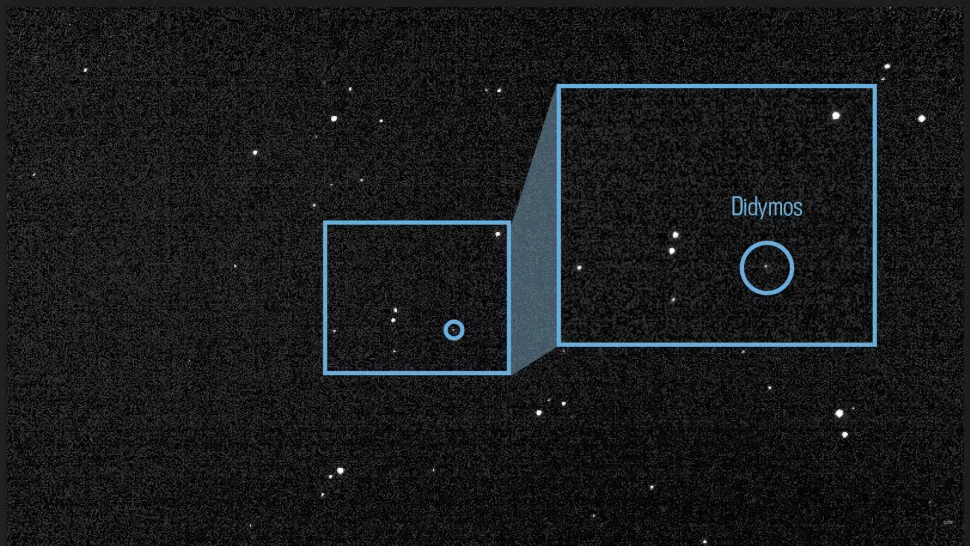NASA's asteroid-slamming DART spacecraft catches 1st look at target (photo)
We're less than a month out from impact.

That's no moon. That's a moonlet.
NASA's Double Asteroid Redirection Test (DART) spacecraft just beamed back the first image of its target, the moonlet Dimorphos, as well as its body it orbits, the asteroid Didymos. DART is a planetary defense test mission designed to impact the moonlet to alter its trajectory around Didymos. If proven effective, this spacecraft design could potentially be scaled up to deflect an Earth-bound asteroid. (Didymos and Dimorphos pose no threat to Earth — they are a test site for the kinetic impact technology.)
The image, which is a composite of 243 individual images, comes from DART's sole instrument, the Didymos Reconnaissance and Asteroid Camera for Optical Navigation (DRACO); it was taken on July 27 and released on Wednesday (Sept. 7). It shows both Dimorphos and Didymos as a single point of light — the spacecraft was still 20 million miles (32 million kilometers) away from the asteroids at that point, so they appear indistinguishable.
Related: NASA's DART asteroid-impact mission explained in pictures
"This first set of images is being used as a test to prove our imaging techniques," DART mission systems engineer Elena Adams of the Johns Hopkins University Applied Physics Laboratory in Maryland, which is managing the mission, said in a statement. "The quality of the image is similar to what we could obtain from ground-based telescopes, but it is important to show that DRACO is working properly and can see its target to make any adjustments needed before we begin using the images to guide the spacecraft into the asteroid autonomously."
Ultimately, DART will use DRACO to navigate to its impact site completely independently of its Earth-based controllers. But for now, humans are in charge. Over the next three weeks, the team will use images taken every five hours to make a series of three trajectory correction maneuvers that put DART on a precise path to Didymos. Then, within about 24 hours of impact, DART will take control to fine-tune its final approach.
"Seeing the DRACO images of Didymos for the first time, we can iron out the best settings for DRACO and fine-tune the software," Julie Bellerose, the DART navigation lead at NASA's Jet Propulsion Laboratory in California, said in the same statement. "In September, we'll refine where DART is aiming by getting a more precise determination of Didymos' location."
Sign up for the Live Science daily newsletter now
Get the world’s most fascinating discoveries delivered straight to your inbox.
Since capturing these images, DRACO has checked in on Didymos three more times.
DART will impact Dimorphos on Sept. 26 at 7:14 p.m. EDT (2314 GMT) — you can watch coverage of the event at Space.com courtesy of NASA TV or directly through the agency's website.
Originally published on Space.com.

Space.com contributing writer Stefanie Waldek is a self-taught space nerd and aviation geek who is passionate about all things spaceflight and astronomy. With a background in travel and design journalism, as well as a Bachelor of Arts degree from New York University, she specializes in the budding space tourism industry and Earth-based astrotourism. In her free time, you can find her watching rocket launches or looking up at the stars, wondering what is out there. Learn more about her work at www.stefaniewaldek.com.










